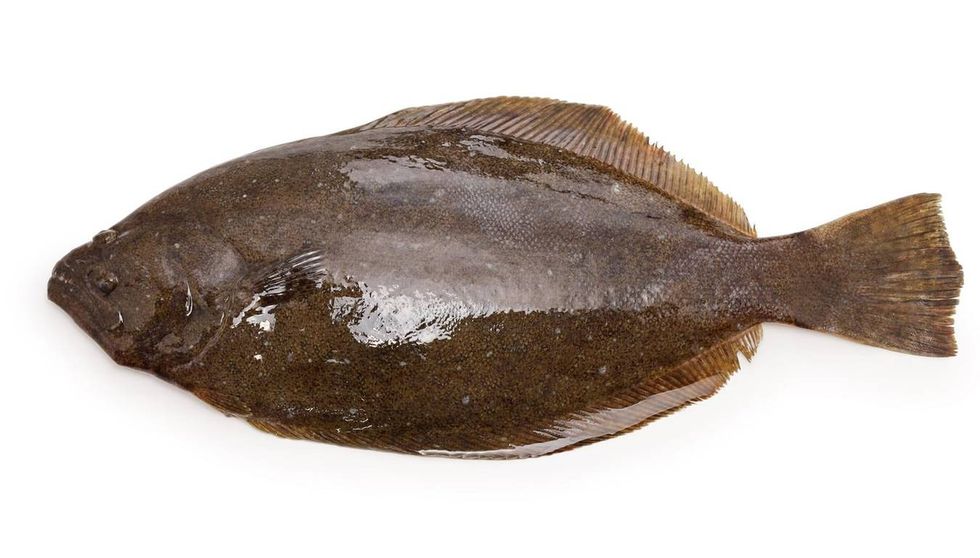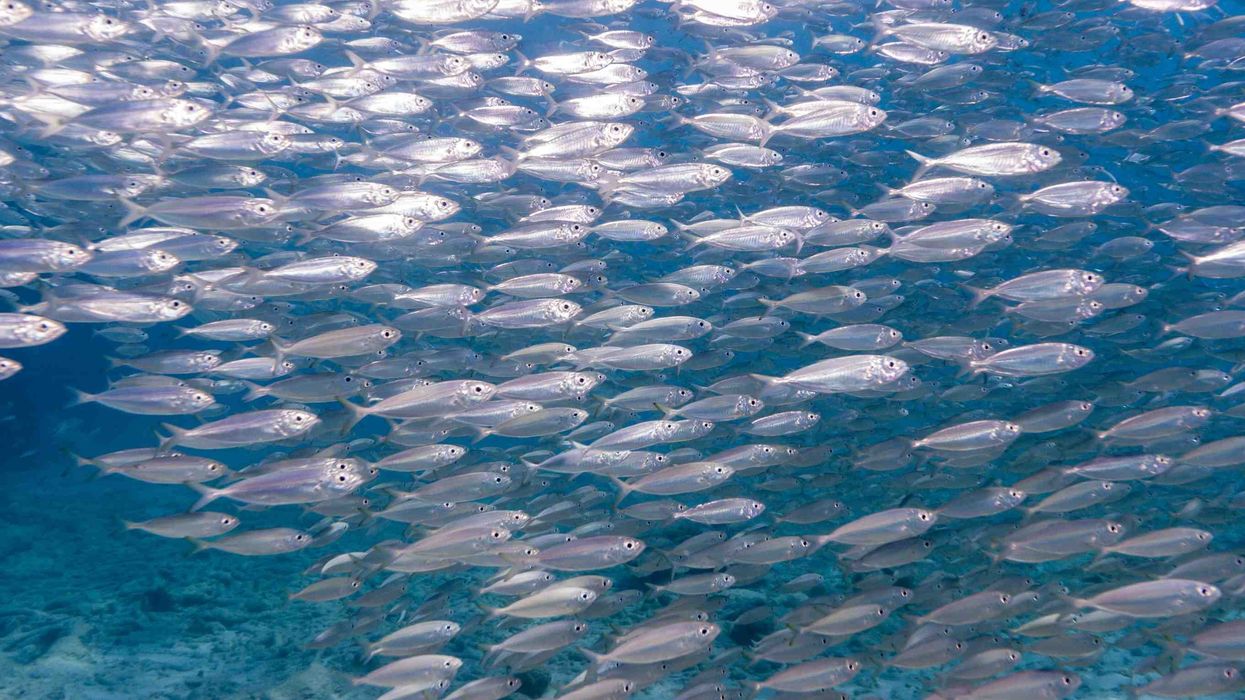The summer flounder is a type of flatfish that lives off the North American coast, Cape Cod, Cape Fear, from Florida to Canada. It is usually found offshore at the surface of the ocean floor.
The summer flounder usually lies facing on its blind side. Like many other sand flounders, the species of summer flounder have both their eyes on the left side of their head. Their eyes face the open seaside.
The summer flounder has received its name since it tends to migrate nearshore from the offshore in ocean floor during summer or spring. The species know to swim and tolerate deep waters, typically ocean and sea floors. They move back to the seafloor during fall and winter in October.
A summer flounder Paralichthys Dentatus has a prey drive, and they are active predators. They usually feed on bony fishes and sometimes also on benthic invertebrates like squids and octopuses.
They are a predatory species of fish. Summer flounders either ambush their potential prey by strategically camouflaging under a thin layer of sand and blending in with the surroundings offshore under the sea, or they sometimes chase them. Their ability to blend with the surroundings also helps them in hiding from potential threats and predators.
A summer flounder is a popular catch in the recreational fishery during spring in late February. Summer flounder fishing is a popular activity.
You may also check out the fact files on peacock flounders and flounders from Kidadl.
Summer Flounder Interesting Facts
What type of animal is a summer flounder?
A summer flounder, Paralichthys Dentatus, is a disc-shaped flatfish that is found in deep-sea waters.
What class of animal does a summer flounder belong to?
Summer flounder belongs to the class Actinopterygii.
How many summer flounders are there in the world?
The species of summer flounder fluke fish is of Least Concern, according to the IUCN. They are found in plentiful numbers in the region they inhabit. The summer flounder is among the large number of species that are found as catch near the seashore by men fishing during spring and summer recreational fishery in late February.
Where does a summer flounder live?
A summer flounder prefers habitat in the sandy, soft and muddy floors of the ocean and estuarine environments most of the time. The fluke fish of North Carolina or the east coast resides at the low and mid-level of the estuarine waters.
But during spring and summer, it leaves and moves offshore to migrate near the seashore where the water temperatures are stable. That is how it has received its name.
The fish is found abundantly along the Atlantic coast from Nova Scotia to Delaware to Cape Lookout. It inhabits the coastal areas with high salinity levels at the shore.
What is a summer flounder's habitat?
The habitat of a summer flounder is the highly saline coastal areas near the shore during summers and spring in late February. They move offshore to the ocean floor during fall and winter around October.
Their distribution is concentrated in the North Atlantic, in Maine to Southern Florida in the United States. The fluke fish are of North Carolina or the east coast.
Summer flounders are found near the seashore during the recreational fishery.
Who do summer flounders live with?
A summer flounder schools in smaller packs at times, but they tend to move alone when they are fishing or ambushing potential prey.
How long does a summer flounder live?
A summer flounder has a decently long life span. They can easily survive up to 14 or 15 years of age.
How do they reproduce?
Unlike most viviparous species of fishes, summer flounders reproduce outside their bodies. A number of fish species carry their offspring internally. It is not the case with summer flounders. They reproduce using oviparous methods of production.
The process of fertilization takes place outside their bodies. Male summer flounders release sperm outside during summers and spring near the surface of the seashore. Females release a million eggs multiple times during summer flounder spawn season. They can release up to four million eggs in the spawning season.
After the fertilization takes place, the eggs hatch within a few days after spawning. Juvenile summer flounders attain sexual maturity at the age of two or three. Hence, they grow fast.
A female summer flounder can release up to four million eggs at a time in the spawning season. A quarter of that quantity of eggs released during the spawn season hatch and survive. Summer flounders have a decently large litter size. Their larvae have a high survival rate.
Their reproductive system is fairly different from the human reproductive system as well. Summer flounders spawn as well as make gametes using their sexual organs. Humans have different organs to produce gametes and reproduction.
What is their conservation status?
The summer flounder is not endangered or extinct. The population has an impressive survival rate. Summer flounders have a life span of nearly 14 years. They are listed with the status of Least Concern by the IUCN. The fishing of the population is not excessive in spite of commercial and recreational fishery.
Summer Flounder Fun Facts
What do summer flounders look like?

*Please note that this picture is not of a Summer Flounder but of a Greenback Flounder. If you have a picture of this species, please send it to hello@kidadl.com.*
The summer flounder is a flat and disc-shaped fish that has both its eyes on the left side of its head. The left side of the body is white and the right side is brown. When it is born it looks like a regular fish.
As it matures and grows physically, its eyes get pushed on one side of its skull. They have spots on their back that help in distinguishing flounders across the species. A summer flounder weighs around 20 lb (9.1 kg).
The flat summer flounder is called the chameleon of the sea. It has the ability to camouflage and blend in with the surroundings of the sea. When it is preying or planning to ambush prey, it tends to hide beneath a layer of sand. Its structure and body colors help in hiding from the predators like sharks, and monkfish.
How cute are they?
Fluke fish do not have any physical attributes that could be considered appealing. On the contrary, they have unusual features like both the eyes on one side of the head (right eye) and bland colors. They are asymmetrically-shaped vertebrates who have a weight limit of around 20 lb (9.1 kg).
How do they communicate?
Fluke fish communicate like regular fish.
How big is a summer flounder?
A Fluke fish can grow up to 22-24 in (55.9-61 cm) long. A summer flounder has dimorphism where the females grow larger than males. It weighs 20 lb (9.1 kg) maximum. It is bigger than a winter flounder.
How fast can a summer flounder swim?
A fluke fish can swim at an average speed. Though it tends to swim faster when it is being chased by a predator.
How much does a summer flounder weigh?
They do not weigh more than 20 lb (9.1 kg).
What are the male and female names of the species?
There are no different terms for male and female summer flounders.
What would you call a baby summer flounder?
Baby summer flounders are called larvae.
What do they eat?
Summer flounders have a prey drive, and they are active predators. They usually feed on bony fishes and sometimes also on benthic invertebrates like squids, octopuses, and shrimp.
Hence shrimps, crabs, and mullets are the best bait. They are a predatory species of fish.
Summer flounders either ambush their potential prey by strategically camouflaging under a thin layer of sand and blending in with the surrounding limits under the sea, or they sometimes chase them. Their ability to blend with the surroundings also helps them in keeping potential threats and predators out of limits.
Are they dangerous?
Summer flounders are not intimidating when it comes to their stature or size limits but they are predatory in nature. They prey on smaller flounders, squids, octopuses, and other smaller fishes. They have skills and tendencies that they use to their benefit while ambushing or chasing prey. Summer flounders camouflage to trap their prey. They are excellent hunters.
However, they are not a potential threat to humans. They are popular picks for a number of commercial and recreational purposes. Summer flounders are fished widely because of their edible and recreational value. It is advised to use larger hooks while fishing since they tend to get aggressive if caught while in the recreational or commercial fishery.
Would they make a good pet?
Summer flounders can be kept in large aquariums because of their size, recreational value, and temperament. However, they cannot be kept with smaller fishes since they could be considered prey. It is necessary to fill the tank’s bottom with sand or fine gravel substrate since they tend to lie at the bottom of the tank.
Did you know...
Fluke fish can change texture and colors like a chameleon.
Fluke fish are also addressed by their common name of 'hirame’, ‘northern fluke’, and ‘fluke’.
They are of major use to humans for commercial and recreational purposes.
The species of fluke fish have almost 110 species.
The oldest fossils of flatfishes emerged soon after the extinction of dinosaurs in the Paleocene Epoch, which was 65-57 million years ago.
Over the Atlantic coast in the United States, fishing for fluke fish becomes popular during summers, especially recreational fishing.
A fluke is a flounder but not all flounders are flukes.
Summer flounders are good for eating as they are a low-fat source of Vitamin B and niacin.
Do summer flounders have teeth?
Fluke fish can be distinguished from other species because of their large mouths, sharp teeth, and pronounced jaw.
What is the difference between winter and summer flounder?
The main differences between a summer flounder and winter flounder are based on their physical features. Winter flounders are also called blackbacks since they are a lot darker than summer flounders.
Winter flounders are almost black in color whereas Fluke fish are found in cream, white and brown shades. These shades of summer flounders help them camouflage with the seafloor.
Winter flounders have their eyes and mouth on the right side of their heads whereas summer flounders have it on the left side.
Winter flounders weigh around 4 lb (1.8 kg) whereas summer flounders weigh around 10-20 lb (4.5-9.1 kg).
Here at Kidadl, we have carefully created lots of interesting family-friendly animal facts for everyone to discover! For more relatable content, check out these codfish facts and yellow tang facts for kids.
You can even occupy yourself at home by coloring in one of our flounder coloring pages.
*Please note the main image is of a flounder. If you have an image of a summer flounder, let us know at hello@kidadl.com.









